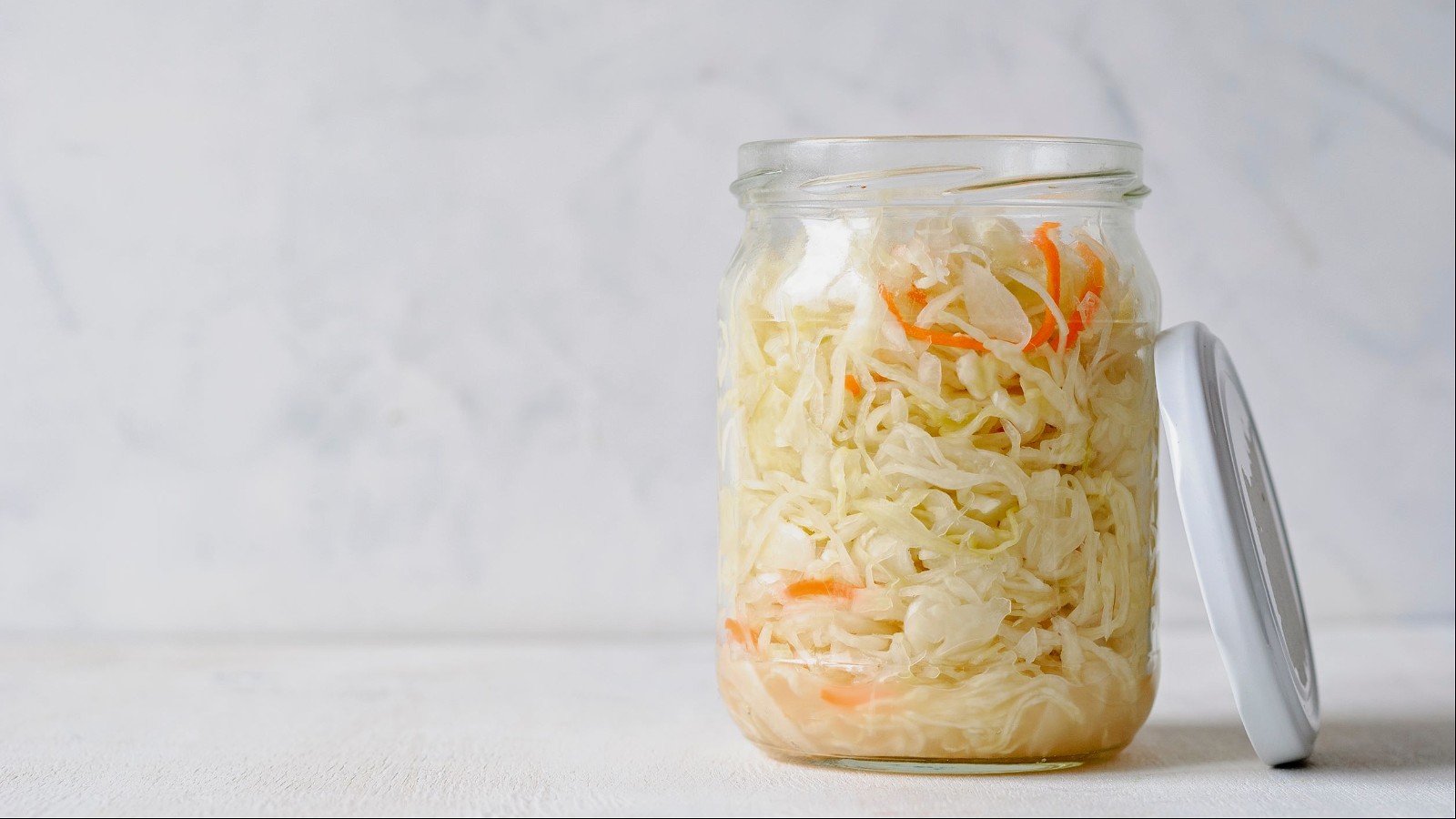
Fermented cabbage--known as Sauerkraut to the Germans, who made this dish famous--was first made in China about 2000 years ago. They would ferment their cabbage in rice wine as a way to preserve it.
This preserving fermentation comes with some surprises. It imparts a tart and tangy flavor while making the nutrients in the cabbage more bioavailable and adding a layer of health-boosting bacteria (probiotics) to the cabbage. It preserves the cabbage and turns it into a superfood at the same time!
Sauerkraut that is traditionally fermented in this way (and not pasteurized) is a superior source of microbiome-supporting probiotics--it contains far more lactobacillus than yogurt. Because of these healthy bacteria, eating sauerkraut can vastly improve digestive health and provide a boost to the immune system.
In addition to healthful probiotics, fermented cabbage is loaded with vitamins C and K, iron, potassium, calcium, phosphorus and fiber. It is known for its antioxidant and anti-inflammatory properties. It is also really delicious!
At our house when my kids have tummy troubles I’ll often find them snacking on sauerkraut or drinking straight sauerkraut juice. (They just pour it into a glass!) Depending on the ailment, they may experience immediate relief. Sauerkraut usually makes quick work of gas, bloating, and indigestion and can calm some stomach bugs pretty quickly, too.
I don’t like to ever run out of sauerkraut, so my solution is to make it at home. This recipe is simple and easy to make with just two ingredients--cabbage and salt. The fermentation does all the work.
This same process works just as well with other vegetables, so try it with all your favorites. Start a new healthy habit of eating some raw fermented vegetables every day and see the positive effects on your health!
Note: Depending on how sour you like it, it will take 1 to 4 weeks for your cabbage to ferment.


